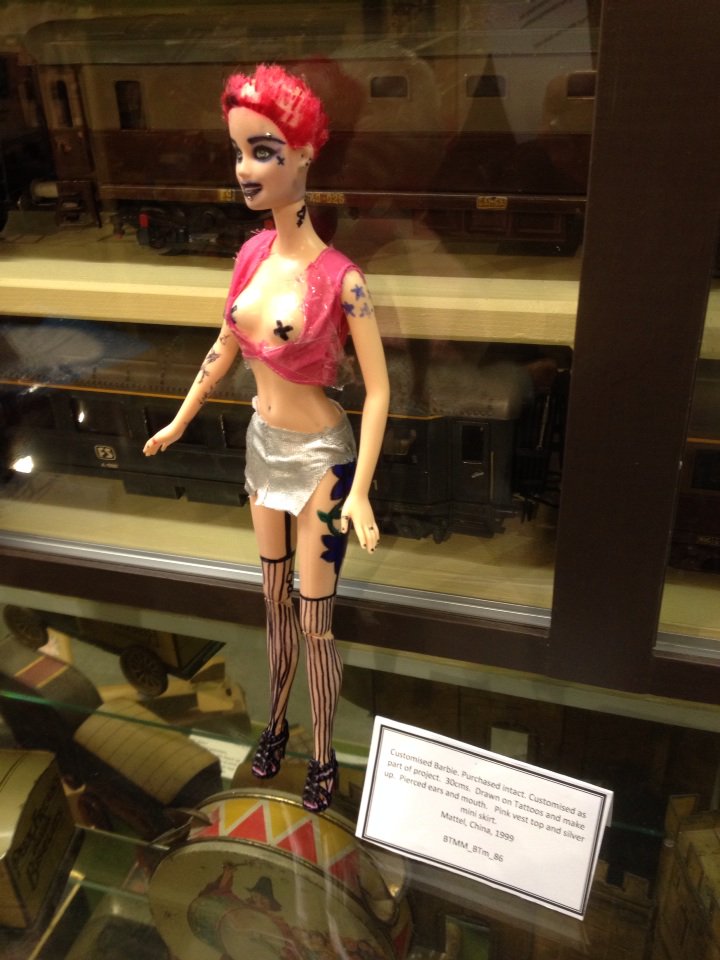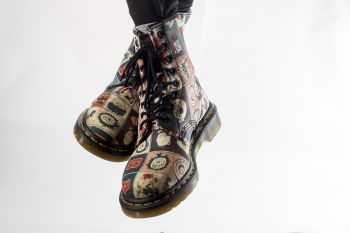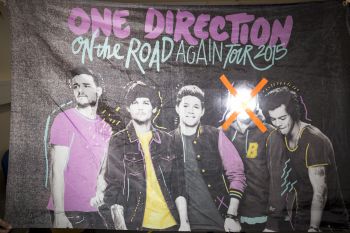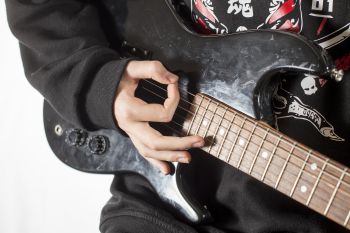Rachel Thomson reflects on her visit to a ‘Toys in the Community’ workshop at the Brighton Toy and Model Museum.
I very much enjoyed a study day at the Brighton Toy & Model Museum showcasing the work of their Heritage Lottery Funded project Toys in the Community which has lots in common with our approach to using ‘favourite things’ as a way of finding out about children’s lives. The overall aim of this project was to encourage community engagement in the toy museum, using a methodology of inviting adults to talk about the toys that they cherished as children – with a focus on teddy bears, dolls and construction toys. These testimonies were filmed and edited and a wonderful website has been developed to showcase the material: http://toysinthecommunity.org/about/
At the study day I met Annebella Pollen who lectures in History of Art and Design at Brighton and was one of the interviewees for the project, where she reflects on her childhood collection of ‘gollys’, black-faced dolls and other memorabilia. Her interview is fascinating, and her presentation pulled out key themes including how ‘unstable’ her memories are of her collection (she can’t actually remember playing with them, just having them). What ‘difficult objects’ they are and were, and how as a child she came to piece together an understanding of the racist discourses that shaped the figure of the golly that she was so attached to. And then the ‘complicated feelings’ that this produced along the way and continues to produce for her today as she reflect on her toys.

A customised Barbie on display at the Brighton Toy Museum
Although this project works with adults, inviting them to reminisce about their childhood through toys, it nevertheless echoes some of the insights that we gained from exploring how children and young people connect with material objects but also how they start feeling nostalgic about them almost from the word ‘go’. For example 7 year old Lucien showed me old toys that captured the kind of boy he used to be (toy cars and a Lego camper van), and teenage Aliyah shared a memory box of memorabilia that she is curating to remember her childhood.
We also saw some of the ways in which toys can be a serious business for children, a way of working out their relationship to a broader culture or simply their place within a household – as wonderfully illustrated by Tempest’s wild doll play.
The study day also confirmed our finding that working with objects can raise powerful emotions and meaning – that we talk about things we have not put into words before as well as recounting well-worn stories. This demands the highest ethical standards for the oral history work, giving people a chance to see their transcripts, to edit material before it goes public and to decide what kinds of formats they want it to be published in. The Toys in the Community project also demonstrated what a popular and participatory methodology this could be, working with a diverse range of groups and ages and involving and training volunteers as interviewers, filmmakers and editors. I especially love the interview between two friends where the creation of an audience allows the couple to find out things about each other that they did not know before.
Liam Berriman April 12th, 2016
Posted In: Uncategorized
Tags: archive, everyday, Favourite things, memories, museums, object stories, objects, Rachel Thomson, toys
Leave a Comment
Rachel Thomson, Professor of Childhood and Youth Studies, University of Sussex
I spent a really interesting day at a University of Sussex event in the ESRC funded Digital Bubbles series exploring interdisciplinary perspectives on autism and technology enhanced learning. I was invited as a sociologist to say something about how research into young people’s digital culture can shed light on the wider question and I presented a draft version from our forthcoming book based on the Face to Face and Curating Childhoods project looking at how ‘research’ itself has become an integral part of  young people’s digital cultures: be that obsessing, stalking and fan-girling a band or showing off skills in homework projects. I was given the final slot of the programme which is always a bit gruelling but meant that I had the pleasure of listening to the other contributions of the day.
young people’s digital cultures: be that obsessing, stalking and fan-girling a band or showing off skills in homework projects. I was given the final slot of the programme which is always a bit gruelling but meant that I had the pleasure of listening to the other contributions of the day.
First up was Yvonne Rogers, Professor of Human Computer Interaction at UCL. Whose research involves making things that might disrupt or change the individualising attention economy which she illustrated with a picture of a line of teenagers all staring into smart phones. These are the ‘digital bubbles’ that Yvonne wants to disrupt, encouraging us to ‘look up and out’ from our devices and pay attention to co-presence and face to face interaction. Her amazing projects include wiring up a forest and creating collaborative devices that incite pair collaboration in order to probe and measure the environment, collecting data that can be aggregated and reflect on by the group, revealing new ways of thinking about spaces. Her latest invention are smart cubes that can be coded to respond to movement, heat, moisture and to express sound and colour and to do so relationally via blue tooth. So for example, children could use the cubes as different instruments creating music in real time.
I loved her focus on attention (we are working with Alice Marwick’s idea of the attention economy) and her commitment to use technology deliberately to intervene, enhance and I’d say ‘re-enchant’ face to face interactions. But I did worry about the insularity of the metaphor of the digital bubble. In our research we have become interested in the ways in which technology can enable young people to access new kinds of ‘public’ which may be mediated and ephemeral but can also be networked (boyd) and live (for more see Nolas 2015). Think for example of the groups of friends playing online games together in real time aided by Skype, practicing their wit and repartee.
The intersection of fans, celebrities and ‘professional fans’ in the form of YouTubers (who begin as ordinary fan and turn into celebrities themselves) can be seen as a dynamic cultural circuit that depends on practices of search as well as the production and circulation of content and value by users. It is clearly a great deal of fun, as well as providing opportunities to travel (camping out with fellow fans to see the celebrity and to get a selfie) and to make friends with those beyond your neighbourhood. The question of whether such practices are ‘progressive or reactionary has come to dominate much academic discussion of the phenomena. Some like Jodi Dean suggest that ‘communicative capitalism’ relies on fantasies of participation, contribution and circulation. For Dean these networks are apolitical in that they are contained and literally privatised and their economic value is harvested by advertisers and corporations. Yet there is another tradition of seeing fandom in much more positive terms as a set of social practices, that may well change the world in subtle but profound ways. Synchronicity seems to be an important part of the picture (doing things in unison and in real time) as does co-presence, although whether we need to be in the same room to be co-present is another matter. One of the ideas that we have been playing with is that of ‘sonic bridges’ – the notion that sound has a privileged relationship with togetherness and with synchronicity. Building on Kate Lacey’s ideas of ‘listening’ in and ‘listening out’ perhaps we can play with musical metaphors to think through some of the affordances of the digital for live communications.
To find out more about the seminar and series see http://digitalbubbles.org.uk/?page_id=24
Our book: Researching Everyday Childhoods: Time, Technology and Documentation is forthcoming from Bloomsbury in 2017.
Liam Berriman March 21st, 2016
Posted In: Uncategorized
Tags: autism, digital bubbles, fans, learning, Rachel Thomson, research
Leave a Comment
In the first of a series of blogs, researchers Rachel Thomson and Liam Berriman reflect on how hackathons might be used as a participatory methodology that span the digital humanities, social science, design and computing.
Talk to me.
Rachel Thomson
On Saturday 14th November I had the pleasure of taking part in an event billed as a ‘Hackathon’ hosted by the Sussex Humanities Lab, CIRCY and the Mass Observation Archive. Hackathons are ‘events in which computer programmers and others involved in software development and hardware development, including graphic designers, interface designers and project managers, collaborate intensively on software projects’.
The day was called ‘my object stories’ and the shared project was to explore ways in which we could bring to life young people’s stories about favourite everyday objects – building on work that we have been doing as part of the Curating Childhoods project which is creating a new multi-media collection within Mass Observation called ’Everyday Childhoods’. The shared task was to invent strategies through which everyday objects – cherished by young people – might talk to an audience and enrich the archive. This might be a pair of Dr Martens boots, a book, a guitar, plastic animals….
Often projects are done in separate stages, with people responsible for their ‘bit’. The hackathon model brought together all the different actors involved in the lifecycle of a research and development project to see what we could get done in a day. In this way, the event created a live interface between processes of data collection, archiving and animation.
The day started and ended with the archive. Young people brought in cherished objects to share as windows into their everyday lives. Researchers and archive outreach officers worked with them to brainstorm what they might want to say about their objects. Photographer Crispin Hughes then collaborated with them to design still images that captured their object, and film maker Susi Arnott recorded them talking about their object’s value and personal meaning.
The digital data was then sent downstairs into the lab where they were used as raw materials for three different data animation strategies. Ben Jackson and Cathy Grundy brought images and sound together within a augmented reality environment – creating short animated films. Manuel Cruz used Unity game design software to make simple games through which a player could encounter objects and stories as part of game pl ay. Chris Kiefer and Thanos Liontiris used motion tracking technology (cameras trained on a fiducial) hooked up to two different platforms: supercollider, through which sound could be triggered by movement, and a second platform which managed visual data projected onto a table acting as a screen. This meant that the object could be moved through a space – with the movements used to reveal images and sound. Young people came down and worked on shaping the three different versions of their object stories.
ay. Chris Kiefer and Thanos Liontiris used motion tracking technology (cameras trained on a fiducial) hooked up to two different platforms: supercollider, through which sound could be triggered by movement, and a second platform which managed visual data projected onto a table acting as a screen. This meant that the object could be moved through a space – with the movements used to reveal images and sound. Young people came down and worked on shaping the three different versions of their object stories.
What I liked most about the day was the way in which all the different ‘experts’ involved got to check out what each other do. I was probably very annoying, looking over shoulders, interrupting and asking questions and no doubt slowed things down. In a day we managed to get a lot done, though nothing ‘finished’. However we did manage to imagine three different ways in which the ‘show and tell’ of research might be achieved in collaboration with digital design. Each of the strategies could provide an interface through which archived data could be accessed and mediated.
The archivists had a think about how the audio and visual data might be cataloged in the archive and spoke with the developers and the researchers about how their different approaches to organising the material might relate. We also gained insight into the kind of work that might be involved in each of the strategies for animation, providing insights for costing future projects. 
The day formed part of an ESRC festival of social science, showcasing to the public the relevance and potential of social research. Our aim was to open up the process through which researchers may co-produce ‘data’ with young participants and to explore the way in which this might be re-used and brought to life in different ways. Building on our earlier work with Mass Observation we wanted to show that an archive need not be seen as a dusty and distant place, but rather the starting point for a range of creative engagements. What is brilliant about the Mass Observation Archive is that it celebrates the mundane and the everyday, believing that in ten, fifty, one-hundred years time people will be as fascinated by hearing about a pair of Dr Marten boots – as we are now excited to know about what people had in their wardrobes in 1945. But the hackathon helped us glimpse how we might use this material right here and now as a starting point in creative experiments with ‘data’.
Hackathons as participatory methodology?
Liam Berriman
Hackathons have become an increasingly commonplace methodology for exploring and experimenting with data. Recent examples of this trend have included calls from archives for programmers and software developers to come and ‘hack’ their collections, and the growth of competitions where young people are invited to play with open-access datasets. Bridging these events is a growing sense of hackathons as a space for playing with archives and data.
 The ‘My Object Stories’ workshop was my first experience of organising (and taking part in!) a hackathon. Over the past year, I’ve become interested in hackathons as a methodology for engaging young people with their own research data – providing a creative space for playing with the re-animation (or ‘hacking’) of data (McGeeney, 2014). Hackathons are often billed as collaborative events that draw on the participation and collective skills of all involved, and i’ve been curious about how hackathons might be used to engage young people in research beyond the data collection process.
The ‘My Object Stories’ workshop was my first experience of organising (and taking part in!) a hackathon. Over the past year, I’ve become interested in hackathons as a methodology for engaging young people with their own research data – providing a creative space for playing with the re-animation (or ‘hacking’) of data (McGeeney, 2014). Hackathons are often billed as collaborative events that draw on the participation and collective skills of all involved, and i’ve been curious about how hackathons might be used to engage young people in research beyond the data collection process.
Though excited by the creative possibilities that hackathons open up, I’ve remained cautious about overstating their potential as ‘participatory’ methods. In past research I’ve voiced scepticism about co-design practices with young people that claim to be participatory. My main concern being that researchers and designers have become very good at speaking the discourse of participation, but are often uncritical about participation’s potential ‘unevenness’ in practice (Berriman, 2014). As such, I approached this event as an experiment in data collection and re-animation, but also as an event in need of critical reflection.

In many ways our hackathon was atypical in format, with the young people creating the data to be ‘hacked’. This created an intensely personal connection between the young people and the hackathon data, with each participant principally concerned with hacking their own data. One of the main challenges this raised was in terms of equipping each young person with the skills and resources to ‘make something’ of their data. Our adult hacker team were on hand to help guide participants through possible data re-animation techniques of varying complexity (ranging from free app tools to game design engines.) The hackathon’s collective expertise and interests therefore played a significant role in defining the potential scope of data animation activities.
The hackathon is therefore a highly situated event that is contingent upon the collaborative pooling of expertise around a common project. Participation is characterised less by unbridled creativity, and more by a curiosity to explore what was possible in a space of assorted interests and expertise. In this respect, the hackathon provides us with a method for engineering collaborative spaces where people with different skills and expertise can come together to experiment with new ways of playing with data.
To find out more about the My Object Stories Hackathon, contact Liam Berriman (l.j.berriman@sussex.ac.uk)
The My Object Stories Hackathon was co-hosted by the Sussex Humanities Lab, the Mass Observation Archive, and the Centre for Innovation and Research in Childhood and Youth. It was funded with support from the ESRC Festival of Social Science and the EPSRC Cultures and Communities Network +.
Liam Berriman December 11th, 2015
Posted In: Uncategorized
Tags: archive, everyday, Favourite things, hackathon, Liam Berriman, Mass Observation, object stories, Rachel Thomson, Sussex Humanities Lab
One Comment
Prof Rachel Thomson
You notice things at festivals, at the meeting point of genres and cultural forms: music, comedy, literature, performance. One of the things I noticed this summer was how participation seems to be infusing them all. In the theatre they talk about the 4th wall, the ‘make believe’ suspension of reality that enables us to unleash our imaginations without fear of ridicule or danger. The 4th wall exists in music too. Salt-N-Pepa’s 1991 single “Let’s Talk About Sex” says “I don’t think this song’s going to be played on the radio”. John Cage’s 4 minutes and 33 seconds of silence demands we face the collaborative artifice of performance. A popular practice is to experiment along the boundaries of constructed-ness: fact, fiction, real time and the imaginative time travel. In the fabulous 12-year in-gestation ‘Boyhood’, Richard Linklater mixes up the meanings of family, friends and actors revealing the compelling and forward facing time frame within which we all exist and age, and within which culture gains audience and meaning. A space within which we build culture and community through call and response.
I am writing this on the train to London as I go to interview Lucien, whose life I have been documenting since before he was born. One of my aims today is to talk to him about what being involved in this study means, ensuring that his ‘consent’ is meaningful. His mum and I share cultural references. When I explained the nature of a longitudinal study I used the ‘7 up’ metaphor, the now-classic ongoing documentary series that seems to have become the key text of reflexive modernity: providing a vocabulary for understanding reality tv (the politics of editing), the emotional economies of public exposure (the more powerful withdrew) and the peculiar moral register of the real time voyeurism (we are implicated for good or bad). So when I asked Monica, 8-months pregnant, if she wanted to be in a longitudinal study she had this as a reference point. For Lucien things are different, especially in the early stages, but as a culture-savvy-in-no-hurry kid, he can place this experience alongside others – the homework projects that require a life story, YouTube stars who document their lives online, or just the long running tv shows like Dr Who and Top Gear where we see characters age and where real life scandal get folded into the cultural product.
But this is research…. I was tempted to write ‘research rather than entertainment’. I could also say ‘rather than documentary’ or more pertinently for Lucien ‘rather than play’, but I am not sure that research should be set up in this way. Research is defined by the presence of research questions and an interest in methodology – a plan for HOW to generate answers to these questions. But research is still part of life. It has its own fourth wall. What we are doing is ‘for research’ so, for example, we will call our interaction an ‘interview’, and this means that we do not have to follow the usual unwritten rules of conversation. Or we will call this an ‘observation’ and this means that I have license to spend the day with you, acting as a shadow, giving myself over to noticing the sounds, smells and sensations of your life.
Research ethics – as conceived through the adult subject – presume a tacit agreement to the terms of this game and the validity of the 4th wall. It is this that we ask our ‘subjects’ (the old language) or ‘participants’ (the new language) to consent to. I sign on this line to agree to take part in a conversation that is of a different order of things than usual life. This means that the researcher may have more power than is usual and I need to trust them not to hurt me or to use the knowledge that we together create as a result of our experiment in a way that might be disrespectful or damaging to me or, for that matter, others. With children who are used to slipping in and out of play mode, this ‘contract’ becomes rather ridiculous. In a healthy way it pushes us towards a different kind of gambit along the lines of ‘I am an adult who would really like to play with you. The reason for this is that I recognise that playing is a really good way of creating knowledge and understanding. Mostly you play with other kids, but also with adults, maybe parents and teachers. What is different with this is that I am going to make documents of our play together and these will be public. Which means that other people can see them. But also you can go back to them over time and they, unlike you, will not change. This might be odd. We’d like you to say yes to doing this. But given that neither of us really know what will happen in the future we are willing to negotiate over the documents. This means you can change your mind and that the records belong to both of us.’
Working with children, as actors know, has a special quality. Perhaps because the 4th wall is something that we have to be socialised into and which symbolically marks the end of an enchanted period of childhood in which the imagination is allowed full rein. The 4th wall is also a historically located phenomena – a product of a particular form of technology and associated literacies. Digital technologies change the game and new generations are taking new things for granted. Of course this poses challenges for research which relies on an analogue-ethics concerned with risk avoidance rather than participation. Working with ideas such as call and response and the power dynamics of the porous 4th wall may help us play.
Liam Berriman December 4th, 2014
Posted In: Uncategorized
Tags: 4th wall, consent, ethics, qualitative longitudinal, Rachel Thomson
Leave a Comment
 young people’s digital cultures: be that obsessing, stalking and fan-girling a band or showing off skills in homework projects. I was given the final slot of the programme which is always a bit gruelling but meant that I had the pleasure of listening to the other contributions of the day.
young people’s digital cultures: be that obsessing, stalking and fan-girling a band or showing off skills in homework projects. I was given the final slot of the programme which is always a bit gruelling but meant that I had the pleasure of listening to the other contributions of the day.